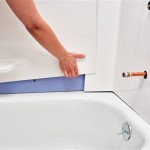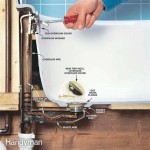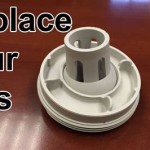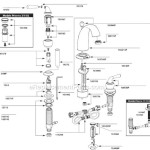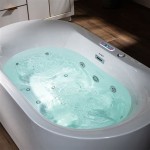Adding A Shower To An Existing Bathtub: A Comprehensive Guide
Many homes feature bathtubs traditionally designed for soaking. However, modern lifestyles often prioritize the convenience of a shower. Fortunately, converting an existing bathtub into a shower-bathtub combination is a common and often cost-effective bathroom renovation project. This conversion can significantly enhance bathroom functionality and cater to diverse bathing preferences.
This article provides a comprehensive guide to adding a shower to an existing bathtub, covering essential considerations, necessary materials, installation steps, and potential challenges. Understanding these aspects will allow homeowners to make informed decisions and potentially undertake the project themselves, or effectively communicate with contractors.
Key Considerations Before Starting the Project
Before beginning any physical work, several crucial factors must be assessed. These include plumbing compatibility, structural integrity, and local building codes. Neglecting these preliminary steps can lead to unforeseen complications and costly rework.
The existing plumbing system must adequately support the addition of a shower. This involves verifying the water pressure is sufficient and the drainpipe is of an appropriate size to handle the increased water flow. Low water pressure can result in a weak and unsatisfying shower experience, while an undersized drainpipe can cause water backups.
The structural integrity of the bathroom walls surrounding the bathtub is paramount. Water damage, such as rot or mold, can compromise the structure and require extensive repairs before a shower can be installed. Thoroughly inspect the walls, particularly around the faucet and drain areas, for any signs of water damage. Addressing any existing issues before proceeding with the shower installation is necessary.
Local building codes and regulations dictate the standards for plumbing, electrical work, and waterproofing in bathroom renovations. These codes are in place to ensure safety and prevent potential hazards. Researching and adhering to these codes is not optional; it is a legal requirement. Failure to comply with building codes can result in fines and the necessity of redoing the work to meet the required standards. Consultation with a local building inspector or permit office can clarify specific requirements for the project.
Carefully consider the type of showerhead that will complement the existing bathtub and bathroom. Different types of showerheads, such as fixed showerheads, handheld showerheads, and rain showerheads, offer varying experiences. The showerhead choice depends on personal preference and the overall design aesthetic of the bathroom. A handheld showerhead, for instance, offers versatility for rinsing and cleaning the bathtub, while a rain showerhead provides a luxurious and immersive showering experience.
It is important to assess the existing bathtub's material and condition. While most bathtubs can readily accommodate a shower conversion, severely damaged or deteriorated tubs may need replacement. Evaluate the bathtub for cracks, chips, or significant wear and tear. Replacing the bathtub during the shower addition can streamline the renovation process and ensure a long-lasting result.
Essential Materials and Tools
Successful completion of the shower addition project necessitates having the right materials and tools. A comprehensive list ensures efficiency and prevents unnecessary delays during the installation process.
A showerhead and faucet set designed for shower-bathtub combinations is essential. These sets typically include a showerhead, a faucet with a diverter valve to switch between the tub spout and showerhead, and necessary plumbing connections. Choose a set that complements the bathroom's existing style and provides the desired functionality.
A shower curtain or shower door is necessary to contain water within the bathing area. Shower curtains offer a more affordable and easily customizable option, while shower doors provide a more permanent and aesthetically pleasing solution. Measure the width of the bathtub opening to ensure the chosen curtain or door fits properly.
Waterproof sealant is crucial for preventing water leaks around the showerhead, faucet, and any other potential weak spots. High-quality silicone sealant is recommended for its durability and water resistance. Apply the sealant carefully and evenly to create a watertight barrier.
Plumbing tools, such as pipe wrenches, Teflon tape, pipe cutters, and a plumber's torch (if soldering is required), are essential for connecting the showerhead and faucet. Familiarity with basic plumbing techniques is necessary for safely and effectively using these tools.
A drill with appropriate drill bits is needed for installing mounting brackets for the showerhead and curtain rod or shower door. Choose drill bits that are compatible with the wall material (e.g., tile, drywall, plaster) to prevent damage.
A level is essential for ensuring the showerhead and curtain rod or shower door are installed straight. A level guarantees a professional and functional installation.
Measuring tape is consistently needed throughout the process, from planning to installation. Accurate measurements are paramount for proper fitting and alignment of all components.
Safety glasses and gloves are crucial for protecting the eyes and hands during the installation process. Debris, sharp edges, and potentially harmful chemicals can pose risks to personal safety. Always wear appropriate safety gear.
A stud finder assists with locating wall studs for securely mounting the showerhead and curtain rod or shower door. Mounting these components on studs provides added stability and prevents them from pulling away from the wall.
Installation Steps
The installation process typically involves several key steps, including removing the existing faucet, installing the new shower faucet with a diverter, connecting the showerhead, and installing a shower curtain rod or shower door.
Begin by turning off the water supply to the bathroom. Locate the shut-off valves for both hot and cold water lines and turn them off completely. This is crucial for preventing water from spraying during the installation process.
Remove the existing bathtub faucet using appropriate plumbing tools. Disconnect the faucet from the water supply lines and carefully remove it from the wall. Clean any remaining debris or sealant from the area.
Install the new shower faucet with a diverter valve. Connect the faucet to the water supply lines using Teflon tape to create a watertight seal. Ensure the diverter valve is properly aligned and functioning correctly.
Connect the showerhead to the shower faucet. This typically involves screwing the showerhead arm into the faucet fitting and tightening it securely. Use Teflon tape on the threads to prevent leaks.
Install the shower curtain rod or shower door. For a shower curtain rod, locate wall studs and install mounting brackets using screws. For a shower door, follow the manufacturer's instructions carefully, ensuring proper alignment and sealing.
Test the shower for leaks. Turn the water supply back on and check all connections for any signs of leakage. Tighten any loose connections and reapply sealant as needed.
Apply waterproof sealant around the showerhead, faucet, and any other potential leak points. This will help prevent water damage and ensure a long-lasting installation.
Thoroughly clean the area after installation. Remove any debris, tools, and materials. Wipe down the showerhead, faucet, and shower curtain or door.
Inspect the finished installation to ensure all components are functioning correctly and there are no leaks. Address any remaining issues promptly.
Potential Challenges and Solutions
Shower addition installations can present several challenges. Addressing these challenges effectively is important for successful project completion.
One common challenge is mismatched plumbing connections. Existing plumbing lines may not be compatible with the new shower faucet. Adapters may be required to bridge the gap between different pipe sizes or thread types. Visiting a local hardware store or plumbing supply store can help in identifying the appropriate adapters.
Another potential issue is water pressure fluctuations. Low or inconsistent water pressure can affect the shower's performance. Installing a pressure-balancing valve can help regulate water pressure and maintain a consistent shower experience. This type of valve automatically adjusts the hot and cold water mix to compensate for pressure changes.
Difficulty locating wall studs can also arise. Without secure anchoring, the showerhead and curtain rod or shower door may not be properly supported. Using a stud finder and, if necessary, installing additional support structures can address this challenge. Alternatively, heavy-duty drywall anchors can be used in situations where wall studs are inaccessible.
Dealing with existing tile or wall damage can be a hurdle. Damaged tiles may need to be replaced, and wall repairs may be necessary before installing the showerhead and curtain rod or shower door. Matching existing tile can be challenging. Consider replacing all the tiles in the area for a uniform look. Similarly, repair any wall damage, such as holes or cracks, before proceeding with the installation.
Finally, code compliance issues can arise. The completed project may not meet local building codes. Obtaining necessary permits and adhering to all applicable regulations is crucial. Contacting the local building inspection or permit office before starting the project can help avoid these issues.

Three Ways To Add A Shower Walk In Bathtub Posh Living

Three Ways To Add A Shower Walk In Bathtub Posh Living

How To Convert A Tub Shower

Three Ways To Add A Shower Tub The Handyman S Daughter

Three Ways To Add A Shower Walk In Bathtub Posh Living
How To Transform Your Tub With A Shower Conversion Kit

Can A Freestanding Bathtub Have Shower Tyrrell And Laing

How To Shower When You Only Have A Bathtub

Why You Might Want To Put Your Tub In The Shower

Bathtub Upgrade Geneva Glass Works
Related Posts

